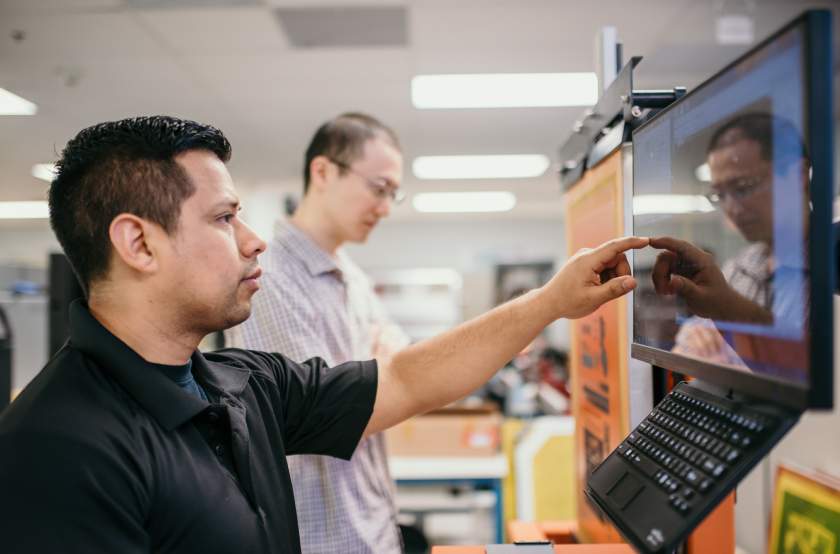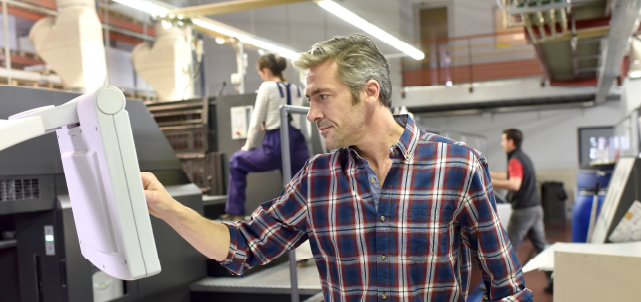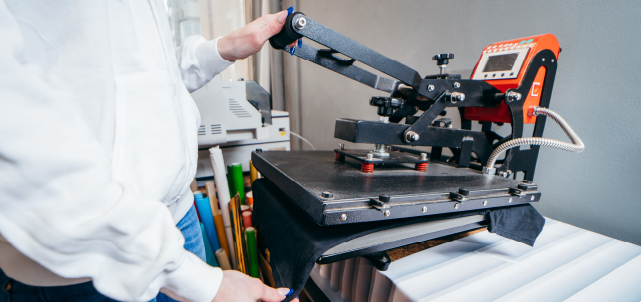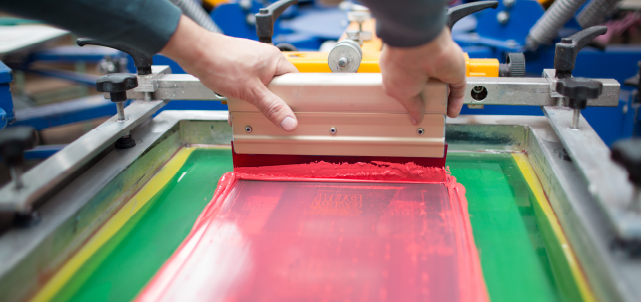CTS stands for computer-to-screen, it’s as simple as that. The same process is also called direct-to-screen or DTS. CTS printers have a number of advantages over other electronic prepress methods used in screen printing that make the addition of a CTS printer to your shop a more than worthwhile investment.
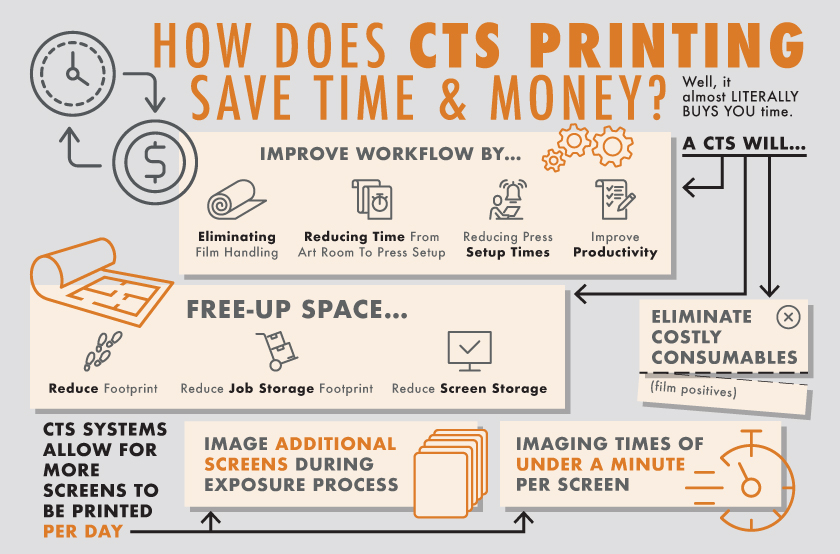
Save Money & Time with a CTS System
The most substantial benefits of a CTS printer are time and cost savings.
- They print your artwork directly to the screen eliminating multi-stage handling of the artwork files, films, and associated processes
- First-generation artwork printed directly to the screen, with the right technology, delivers higher-quality screens with less set-up and faster prep times
- The elimination of processes, handling, and generally improved through-put results in time savings and reduced labor costs
For the screen printer, CTS printers eliminate numerous steps, cutting down production time in the screen preparation and press setup areas. These time and costs savings improve your profitability even as average order sizes may have dropped. Pinholes and other artifacts common to analog processes are eliminated, reducing tedious touch-up work or screen redos.
By digitizing your screen room, your files are stored electronically. There are no more films to store or reprint, saving you valuable human resources, footprint, and time. If someone reorders the same design, you can quickly produce it from the stored file knowing the new print job will match the original exactly. This is also a saving grace if a screen is damaged in the printing process.
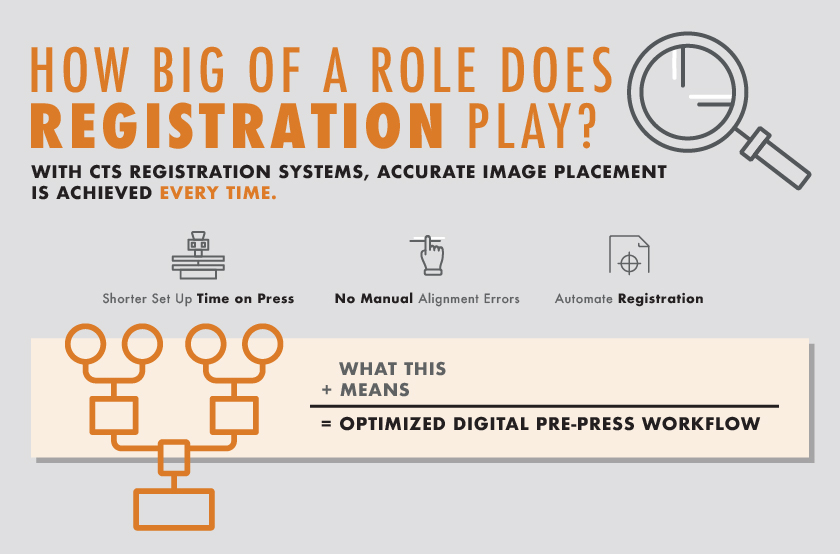
How Does a CTS Solution Affect Registration?
Computer-to-screen systems are much more accurate than film. They are precise. Registration is perfect on the printer, where, when done traditionally, registration can be impacted negatively by film’s dimensional stability, handling, and human error.
The precision of CTS systems is a labor saver in its own right. Your employees aren’t dedicating time registering films on screen and then spending precious production time registering the screens on the press. These time savings add up when producing multiple demanding jobs each day.
CTS printing eliminates wasted time and manpower making you more nimble at doing what you came to work to do: print t-shirts.
Do CTS Systems Play a Significant Role in Image Quality Improvement?
Most CTS systems are able to print up to 65 lpi. Some go well beyond that, making them not only ideal for textile shops to produce higher quality, lower line-screen images, but also pushing the artistic envelope on t-shirt quality, as well as reaching out to industrial printers without the high price tag of alternative technologies. On top of that, the higher capability CTS printers more effectively create smoother halftone transitions used in process and simulated process applications.
In nearly every segment of the printing industry, whether it be screen printing, flexo, or offset printing, first-generation artwork produces higher quality output on the final substrate. This is equally true with screen printing as with these other methods. First-generation artwork printed directly to the screen, with the right technology, delivers higher-quality screens with less set-up and faster preparation times.

How Does CTS Printing Affect the Prep Process?
Like most electronic prepress processes, the artist simply sends the artwork to the CTS printer by way of RIP software. The rasterized image is frequently stored as a tiff file, or some similar format. That file is ultimately released by the screen room technician to the printer. In this process, there is no need to print, handle, or register films. Each of those processes has been completed in the simple task of releasing the file to be printed. The next step is exposure.
Most CTS printers come with registration systems that allow the technician to load a screen onto the printer. These registration systems are typically designed to emulate what is used on press. They can be three-point in nature, or as elaborate as some of the more accurate pin registration systems.
Front-end software handles the image template and positioning. Typically, they are custom to your shop. That said, there are standard settings on which you base your templates.
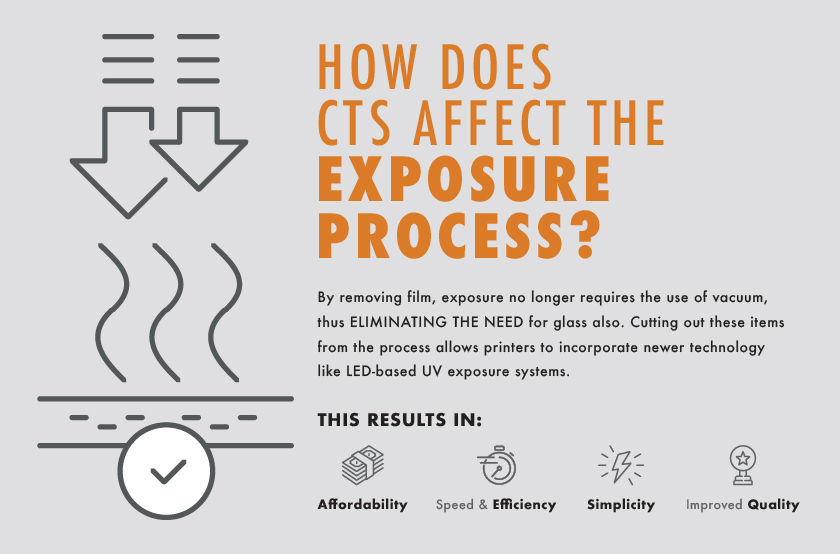
How Does CTS Printing Affect the Exposure Process?
The implementation of a CTS printer typically will reduce overall exposure times since you eliminate the raw transparent film required to image the screen. This is because CTS systems directly image onto a coated screen. You don’t have to deal with vacuum and glass. That alone adds up to tremendous time savings each day.
How does the reduced exposure time affect the production rate in the average printing process? Many CTS machines can produce a hundred screens per shift. Again, depending on technology, some can produce much more. And that’s assuming you have only one CTS imaging system. By reducing the potential exposure bottleneck your throughput is increased without adding demand on personnel.
EXILE Technologies
CTS printers can require significant up-front investment. However, in nearly all cases evaluated, the ROI justifies the purchase. One could argue that buying another press is better. It could also be argued that the ability to produce more efficiently off the press may be the better bet. Either way, the increased productivity, print quality, and time savings that a CTS printer delivers makes it one of the most worthwhile investments your shop may ever experience.
EXILE Technologies offers many computer-to-screen printing solutions each with the specific ability to increase productivity and generate savings in your production area. Our products include the Spyder III, FREEStyler, V-Lux, and more! Contact us today to learn how adding a computer-to-screen imaging system can BUY YOU TIME.
